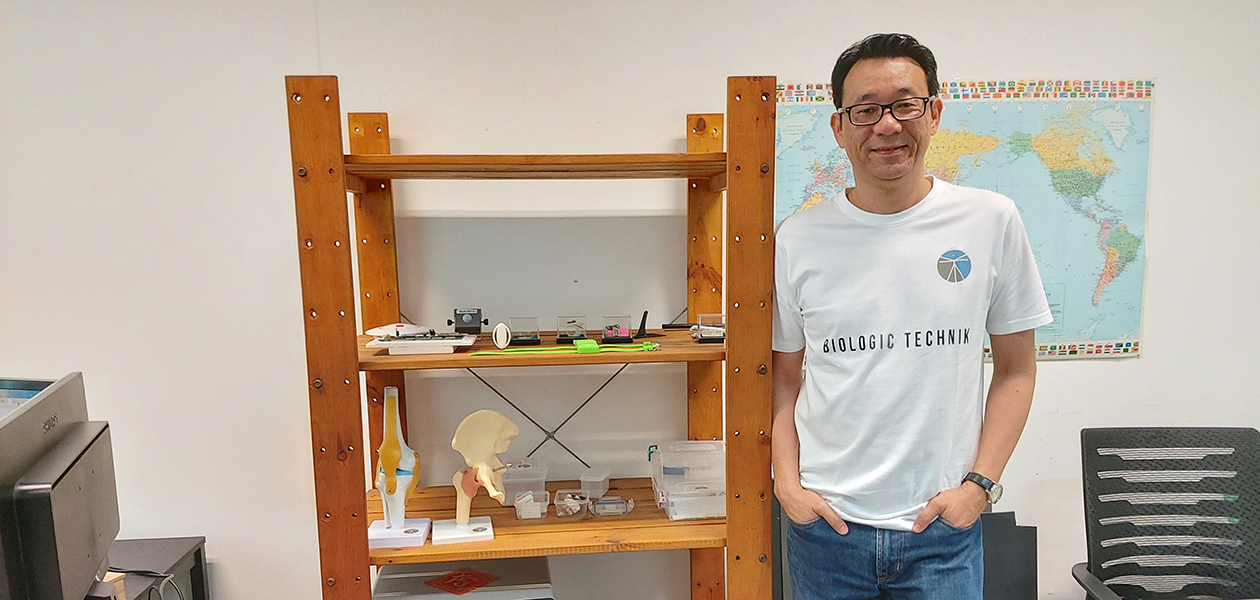A big step towards open innovation
Cultivating a culture of open innovation has helped biomechanics company BioLogic Technik create useful technologies for Singapore’s rapidly ageing population
Since the beginning of the 19th century, human lifespans have practically doubled. Then, the average adult lived to a measly 40 years of age. But thanks to technological advancements in sanitation, housing and healthcare, people now live far longer—to the point that ageing populations are rapidly outpacing other age groups.
Yet, this increase in life expectancy is both a boon and bane. While a longer lifespan means more opportunities to work, spend time with loved ones and enjoy the pleasures of life, ageing is only productive when accompanied by good health. Luckily, recent innovations have made it possible for clinicians to conveniently assess the overall health of our greying compatriots.
Singapore-based start-up BioLogic Technik Ptd, for example, has developed a technology that analyses the strength and walking gait of elderly people. Walking gait abnormalities generally indicate a host of health impairments, ranging from arthritis to neurological conditions like Alzheimer’s and Parkinson’s, or are simply part of frailty in aging.
As BioLogic’s Founder Bernard Loke shares below, such a tool was made possible only through open innovation. In this interview with IPI, find out more about how a natural aptitude for open innovation has led to the company’s success in building smart technology for an ageing population.
1. What is the core competency of your company?
We are a Singapore deep tech start-up focused on medical devices. Our product is an embedded biomechanics algorithm that analyses walking gait and measures strength. It has been used in hospitals and nursing homes. So far, we have been able to detect a weak gait with 90% accuracy.
2. Was there a turning point in your history that convinced you that open innovation was the right way to grow?
My background in engineering and finance as well as experience in the aviation sector played a contributing role in this. In the aviation industry, most products and services come from multiple industries and partners. I’ve been exposed to many different technologies offered by a broad spectrum of companies. Therefore, open innovation is something natural to me.
3. How has open innovation benefited your company thus far?
Most of my customers are in the healthcare industry, ranging from hospitals to nursing homes. Coming from a non-clinical background, I am fortunate to have witnessed firsthand the openness of clinicians to adopt technologies that fall outside their clinical domain. This openness offers great opportunities for innovators like myself to contribute to the healthcare sector. Given that the world’s population is rapidly ageing, it is a very exciting time to explore new technologies in this field.
4. How do you encourage a culture of open innovation in your company?
To satisfy our customers, different types of sensor technologies are required. We source for these technologies elsewhere as it is not cost-efficient to develop them in-house. We have recently licensed a technology from a local polytechnic for this purpose.
Open innovation in our company can also be introspective at times. In a regular brainstorming session, we explore different applications of our biomechanics algorithm that is primarily used by clinicians. After several sessions, we decided to adapt the technology specifically for the elderly population. With this conceptual direction, the team was able to look beyond our current business environment, finally deciding on creating a personalised exercise program for the elderly. In the process, we also reached out to sports science experts to help develop the program. Recently, we’ve completed our proof-of-concept. The entire process—from ideation to reaching out to external experts and technical development—took approximately six months.
Another example was when we developed our own Internet of Things (IoT) platform to enable our various sensors. After two IoT projects, we initiated a discussion within the company, aiming to monetise our know-how in this area. Eventually, the team decided to spin-off our IoT platform to third parties as a software solution. We were very happy with this development, as it meant that everyone in the team was empowered to think outside the box.
5. What are some lessons that you have learnt in the process of engaging in open innovation?
We learnt many lessons in our journey, like having the open-mindedness to harness expertise whether in-house or beyond. This has helped us to build up our in-house competencies in evaluating new technologies including emerging innovations that we are unfamiliar with.

